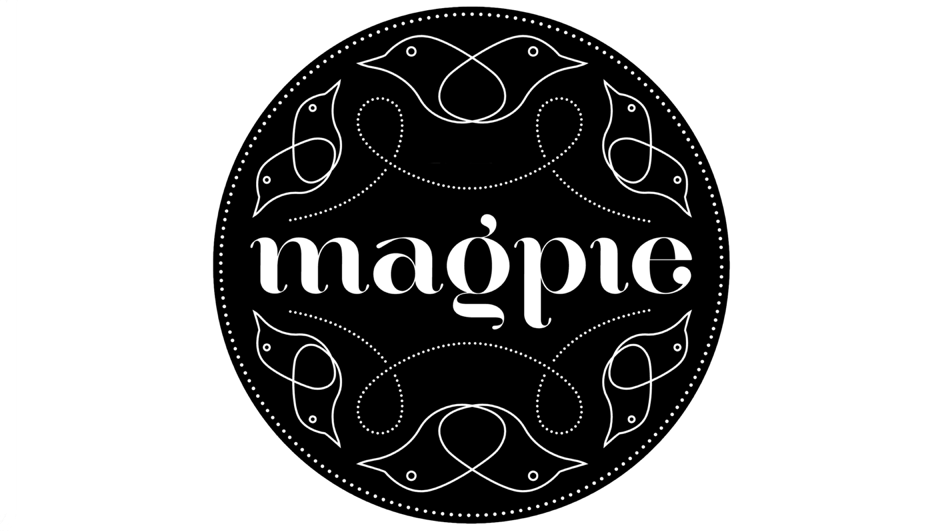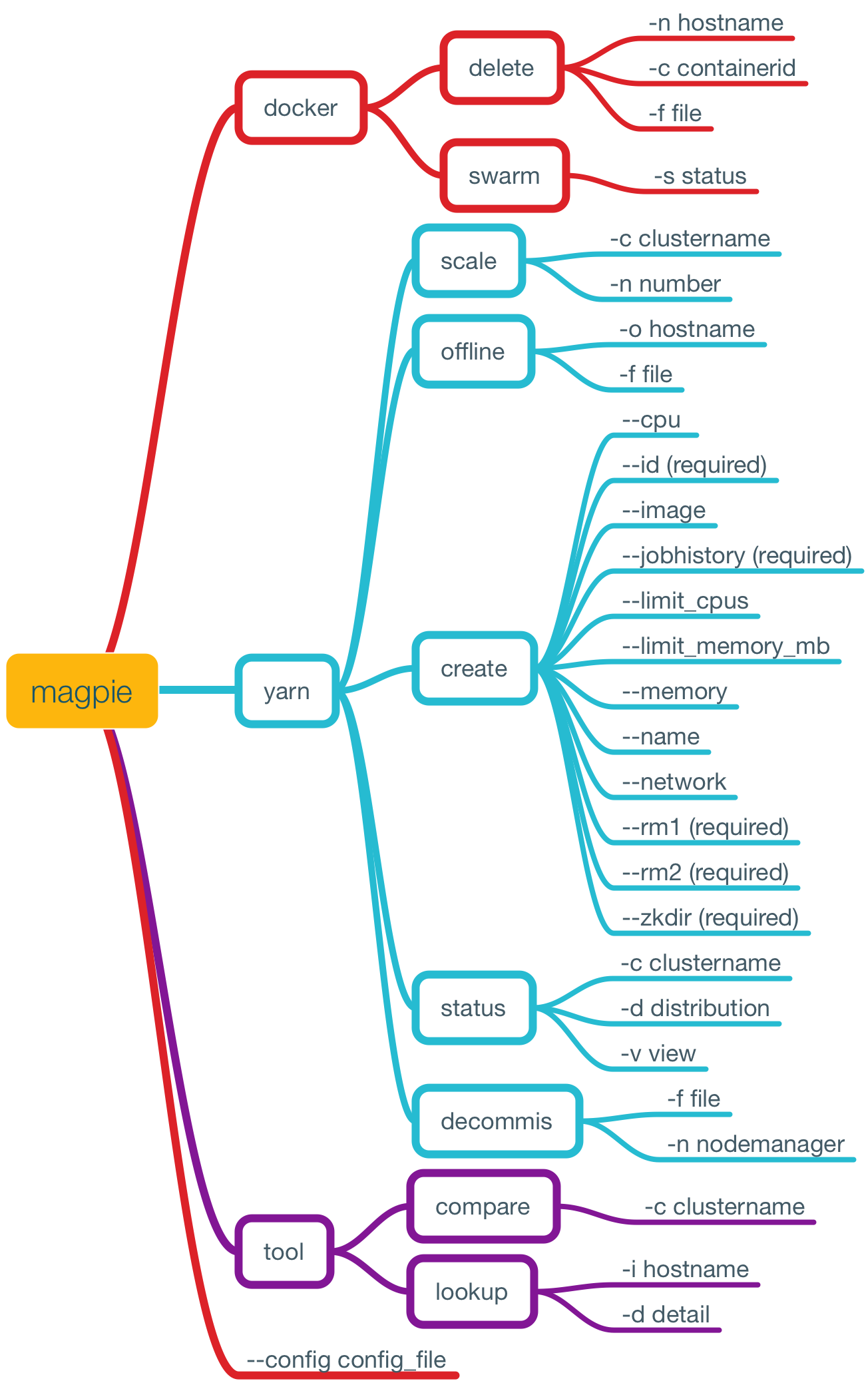#Magpie
Magpie is a command line tool for deploying and managing the Yarn on Docker cluster.
Build and run an yarn cluster on docker, pass the config item to hadoop configuration files through docker ENV.
###How to build the docker image and run a container step by step?
You should follow the docker project standard to build your own docker image.
-
Step1
Prepare the direcotries for yarn and chown owner to hadoop.
Download hadoop-2.6.0-cdh5.5.2.tar.gz and install it in docker image. Unzip it and remove the default hadoop configuration files.
-
Step2
Put the codec lib.so files into the hadoop native directory.
Put custom hadoop configuration files to hadoop conf directory.
-
Step3
Set the ENV and Entrypoint.
-
Stop4
Run a container with sepecific ENV.
###Build image
Edit Dockerfile and change the base image to your own JDK7 image.
./build.sh
docker build -t hadoop-yarn:v0.1 .
###Run a container
For example
With hadoop ha
docker run -d -e NAMESERVICE=addmp -e ACTIVE_NAMENODE_ID=namenode29 -e STANDBY_NAMENODE_ID=namenode63 -e HA_ZOOKEEPER_QUORUM=192.168.0.1:2181,192.168.0.2:2181,192.168.0.3:2181 -e YARN_ZK_DIR=rmstore -e YARN_CLUSTER_ID= yarnRM -e YARN_RM1_IP=192.168.0.3 -e YARN_RM2_IP=192.168.0.2 -e YARN_JOBHISTORY_IP=192.168.0.3 -e ACTIVE_NAMENODE_IP=192.168.0.1 -e STANDBY_NAMENODE_IP=192.168.0.2 -e HA=yes hadoop-yarn:v0.1 resourcemanager
docker run -d -e NAMESERVICE=addmp -e ACTIVE_NAMENODE_ID=namenode29 -e STANDBY_NAMENODE_ID=namenode63 -e HA_ZOOKEEPER_QUORUM=192.168.0.1:2181,192.168.0.2:2181,192.168.0.3:2181 -e YARN_ZK_DIR=rmstore -e YARN_CLUSTER_ID= yarnRM -e YARN_RM1_IP=192.168.0.3 -e YARN_RM2_IP=192.168.0.2 -e YARN_JOBHISTORY_IP=192.168.0.3 -e ACTIVE_NAMENODE_IP=192.168.0.1 -e STANDBY_NAMENODE_IP=192.168.0.2 -e HA=yes hadoop-yarn:v0.1 nodemanager
Without hadoop ha
docker run -d -e NANENODE_IP=192.168.0.1 -e RESOURCEMANAGER_IP=192.168.0.1 -e YARN_JOBHISTORY_IP=192.168.0.1 -e HA=no hadoop-yarn:v0.1 resourcemanager
docker run -d -e NANENODE_IP=192.168.0.1 -e RESOURCEMANAGER_IP=192.168.0.1 -e YARN_JOBHISTORY_IP=192.168.0.1 -e HA=no hadoop-yarn:v0.1 nodemanager
###ENV included with hadoop HA
-
HA (default yes)
-
NAMESERVICE
-
ACTIVE_NAMENODE_IP
-
STANDBY_NAMENODE_IP
-
ACTIVE_NAMENODE_ID
-
STANDBY_NAMENODE_ID
-
HA_ZOOKEEPER_QUORUM
-
YARN_ZK_DIR
-
YARN_CLUSTER_ID
-
YARN_RM1_IP
-
YARN_RM2_IP
-
YARN_JOBHISTORY_IP
###ENV included without hadoop HA
-
NAMENDOE_IP
-
RESOURCEMANAGER_IP
-
HISTORYSERVER_IP
###NodeManager resource limit
-
CPU_CORE_NUM
-
NODEMANAGER_MEMORY_MB
##Magpie CLI management Tool
###Precondition
- No-password login to all the active resource managers.
- Docker container's name must contain the cluster name.
###Usage
Use magpie -h for help usage.
Magpie is a CLI tool to manage the Yarn on Docker cluster.
Magpie can be used to inspect the docker,swarm and yarn cluster status, scale the yarn cluster and decommising
nodemanagers or delete the existed containers.
Usage:
magpie [command]
Available Commands:
docker Docker cluster management tool.
tool Other management tool.
yarn Yarn cluster management tool.
Flags:
--config string config file (default is conf/magpie.toml)
-t, --toggle Help message for toggle
Use "magpie [command] --help" for more information about a command.
###Configuration
Magpie use viper to resolve the toml configuration file.
Config file default located at ./conf/magpie.toml
You can use --config to sepcify your custom configuration file.
Most configuration items are inherited from docker image, you don't need to specify in the configuration file, unless you want to modify the docker environment variables in the image.
[clusters]
#Yarn clsuter name
cluster_name = ["yarn1","yarn2","yarn3"]
#Swarm master ip address
swarm_master_ip = "192.168.0.1"
swarm_master_port = "4000"
nodemanager_exclude_file = "/usr/local/hadoop/etc/hadoop/exclude.txt"
[resource_managers]
#Yarn active resourcemanager ip address
yarn1 = "172.18.0.2"
yarn2 = "172.18.0.3"
yarn3 = "172.18.0.4"
[base_container]
#Base container used for scale the yarn cluster
yarn1 = "yarn1-nm1"
yarn2 = "yarn2-nm1"
yarn3 = "yarn3-nm1"
[nodemanager]
#Nodemanager default config
HA = "yes"
NAMESERVICE = "dcnameservice"
ACTIVE_NAMENODE_IP= "namenode-001.test.com"
STANDBY_NAMENODE_IP = "namenode-002.test.com"
ACTIVE_NAMENODE_ID = "namenode1"
STANDBY_NAMENODE_ID = "namenode2"
HA_ZOOKEEPER_QUORUM = "zk-001.test.com:2181,zk-002.test.com:2181,zk-003.test.com:2181"
YARN_ZK_DIR = ""
YARN_CLUSTER_ID = ""
YARN_RM1_IP = ""
YARN_RM2_IP = ""
YARN_JOBHISTORY_IP = ""
NAMENODE_IP = ""
RESOURCEMANAGER_IP = ""
CPU_CORE_NUM = 4
NODEMANAGER_MEMORY_MB = 8192
network_mode = "mynet"
limit_cpus = 5
limit_memory_mb = 12288
image = "docker-registry:5000/library/hadoop-yarn:v0.1"
cmd = ["nodemanager"]###Feature
- Inspect the swarm cluster status.
- Inspect the yarn clsuter status.
- Inspect the docker contianer status include contianer's host config and config items.
- Delete docker containers.
- Offline or decomissing yarn nodemanagers.
- Scaling yarn cluster.
- Add a yarn create command to create a new yarn nodemanager for other yarn cluster.
###Build
Build environment
go 1.7.4 adm64
Build magpie on your own platform
go build -o magpie main.goBuild for multi-platform
goxc -d=build -pv=1.0.0 -bc='linux,darwin' -arch='amd64'You need to install goxc by yourself.
###TODO
- The base container should be definited in configuration file first
- Scale and flux the yarn cluster automatically
- Nodemanager registered on resourcemanager repeatability
###Reference
Docker remote API version 1.23
YARN RESTful API version 2.6.0
###About
Author: Jimmy Song rootsongjc@gmail.com
FYI: If you want to create a yarn cluster with multiple nodemanagers, you need a docker plugins to make the docker container on different hosts can be accessed with each others. You need a docker ipam plugin to make the continers located on different hosts can be accessed by each others. Try this:https://github.com/rootsongjc/docker-ipam-plugin You also need a plugin to listen on docker nodes and register container's IP-hostname into a DNS server so that docker containers can recognise each other by the hostname which is the same with the container ID.

